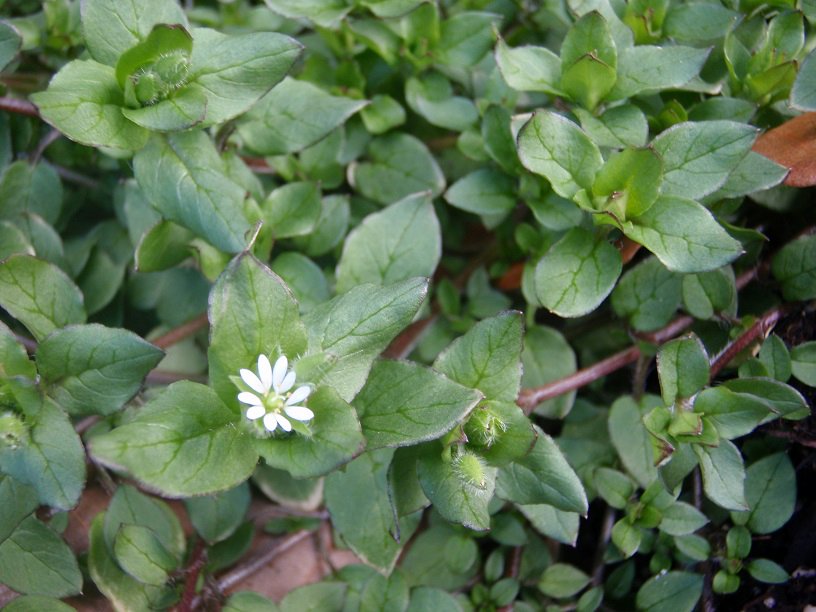Surprising as it seems, winter can be a fine time to locate mild-tasting wild edible plants. The cooler weather and slower growth can keep many greens from turning bitter. Here are three of the most common wild edibles that can withstand the winter weather, and make for tasty salads.
1. Chickweed (Stellaria media)
This species is a low growing herbaceous annual plant that often forms a carpet on the disturbed ground of farms, gardens, and lawns. Native to Europe, it is now naturalized in many places. The small, ovate simple leaves grow in an opposite branching pattern on the round, green stems. Chickweed has white flowers, which appear to have 10 petals, but on closer inspection, it really only has five, which are partially split. The plant germinates in fall or late winter, and in spring it forms mats of greenery or vine-like runners. The tender leaves and stems can be eaten raw or cooked.
The Star Chickweed (Stellaria pubera) and Mouse-ear Chickweed (Cerastium vulgatum) can be eaten as a cooked green, and Star Chickweed can be eaten raw. Chickweed can be used as a poultice for an anti-itch remedy, and can be eaten to relieve constipation.
Want to learn more about foraging for wild food?
Check out Outdoor Life University’s Online Wilderness Survival Class ****with Tim MacWelch
2. Sheep Sorrel (Rumex acetosella)
This small plant grows some very unusual spear-head shaped simple leaves in fields and gardens. Sheep sorrel is a perennial herbaceous plant that has a reddish alternate branching stem, up to a height of 18 inches. The leaves are typically small, about 1 inch, and smooth edged. They have a pair of lobes at the base of each leaf which may point outward or down to the base of the plant. The tender, sour tasting leaves can be eaten raw as a salad or steeped in hot water for a sour drink very similar to wood sorrel (Oxalis spp.). And like wood sorrel, the sour flavor comes from oxalic acid which should be consumed in moderation. If regular consumption of either of these plants is followed by urinary gravel (small stones), stop eating these plants.
3. Wild Onion (Allium spp.)
There are roughly a dozen different species growing in North America, which could fall under the name of “onion.” Some species grow even in the dead of winter, favoring open ground and sunny conditions. Look in fields and meadows for some species. Look no further than your yard for other species. Some of these are closer to garlic in appearance and flavor, while others resemble chives.
The critical factor that all these species share is their membership to the allium genus. This group of plants is edible to humans, and generally very tasty. But don’t just wolf down everything shaped like an onion. The broader family they belong to is the lily family, which contains some toxic members. Make sure the plant really is an onion or garlic by looking for the classic shapes of a bulbous root and a rounded stem of onion and garlic. Once it passes the visual test, go to the scratch and sniff phase of testing. Scratch the bulb, or bruise the green tops, and you should immediately smell the familiar oniony odor. If you start to have a few tears welling up in your eyes, all the better. Then you know you have an onion or garlic genus member for sure. Use these raw or cooked, just like their store-bought relatives.
Are you out foraging this winter? Tell us what you’ve found by leaving a comment.
